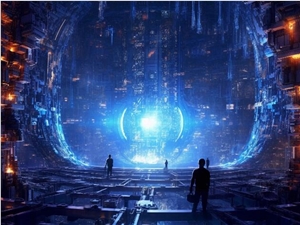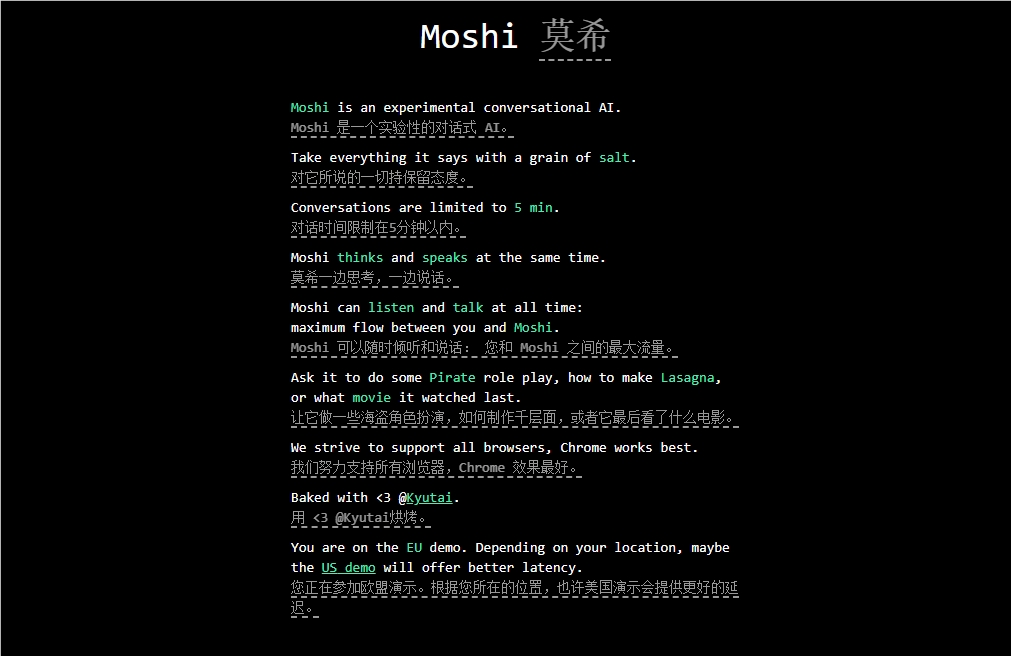In this digital era, conversations with machines have become a part of daily life. However, these interactions often lack naturalness and fluency, feeling somewhat devoid of "human touch." This situation may soon change. The full-duplex voice dialogue system Moshi, developed by Kyutai Labs, is ushering in a new era of more natural and fluid human-machine interactions.
Moshi is a voice and text-based dialogue model, with a core innovation in treating dialogue as a voice-to-voice generation process. This approach elegantly addresses many issues inherent in traditional voice dialogue systems, such as latency, information loss, and the limitations of turn-taking. What sets Moshi apart is its ability to listen and speak simultaneously, much like humans, handling overlaps, interruptions, and interjections in conversations with ease.
Moshi's robust capabilities stem from three core technologies. The first is the Helium text language model, Moshi's "brain," with 7 billion parameters, capable of powerful language understanding and generation through learning vast amounts of English data. The second is the Mimi neural audio codec, acting as Moshi's "mouth" and "ears," converting between voice signals and model-understandable discrete units. Lastly, the multi-stream audio language model is Moshi's innovation, allowing it to process multiple audio streams simultaneously, achieving synchronous understanding of multiple speakers' voices.
Moshi also features a unique "inner monologue" function. Before generating voice, it predicts time-aligned text tokens synchronized with audio tokens. This not only enhances the linguistic quality of the generated voice but also provides streaming voice recognition and text-to-speech services, further strengthening its dialogue capabilities.
In various performance tests, Moshi has demonstrated outstanding results. Whether in text understanding, voice intelligibility, audio quality, or spoken Q&A, Moshi has reached the leading level among existing voice-text models. This means we are one step closer to truly natural and fluent human-machine dialogue.

However, with the advancement of AI technology, security issues have become increasingly prominent. Notably, Moshi's development team has considered this from the outset. They have implemented multiple measures to ensure system security, including avoiding harmful content generation, protecting user privacy, and ensuring voice consistency. Moshi can identify and refuse to answer inappropriate questions while maintaining its own voice consistency, and it does not mimic the user's voice, providing additional security for users.
The advent of Moshi is not only a technological breakthrough but also a significant innovation in human-machine interaction methods. It showcases the infinite possibilities of future dialogue systems, presenting a vision of a future where humans and machines can engage in natural, fluid, and human-like conversations. As this technology continues to develop and improve, we may soon achieve truly seamless and high-quality communication with machines, bringing scenes from science fiction films to real life.
Model URL: https://huggingface.co/kyutai/moshiko-pytorch-bf16
Paper URL: https://kyutai.org/Moshi.pdf




